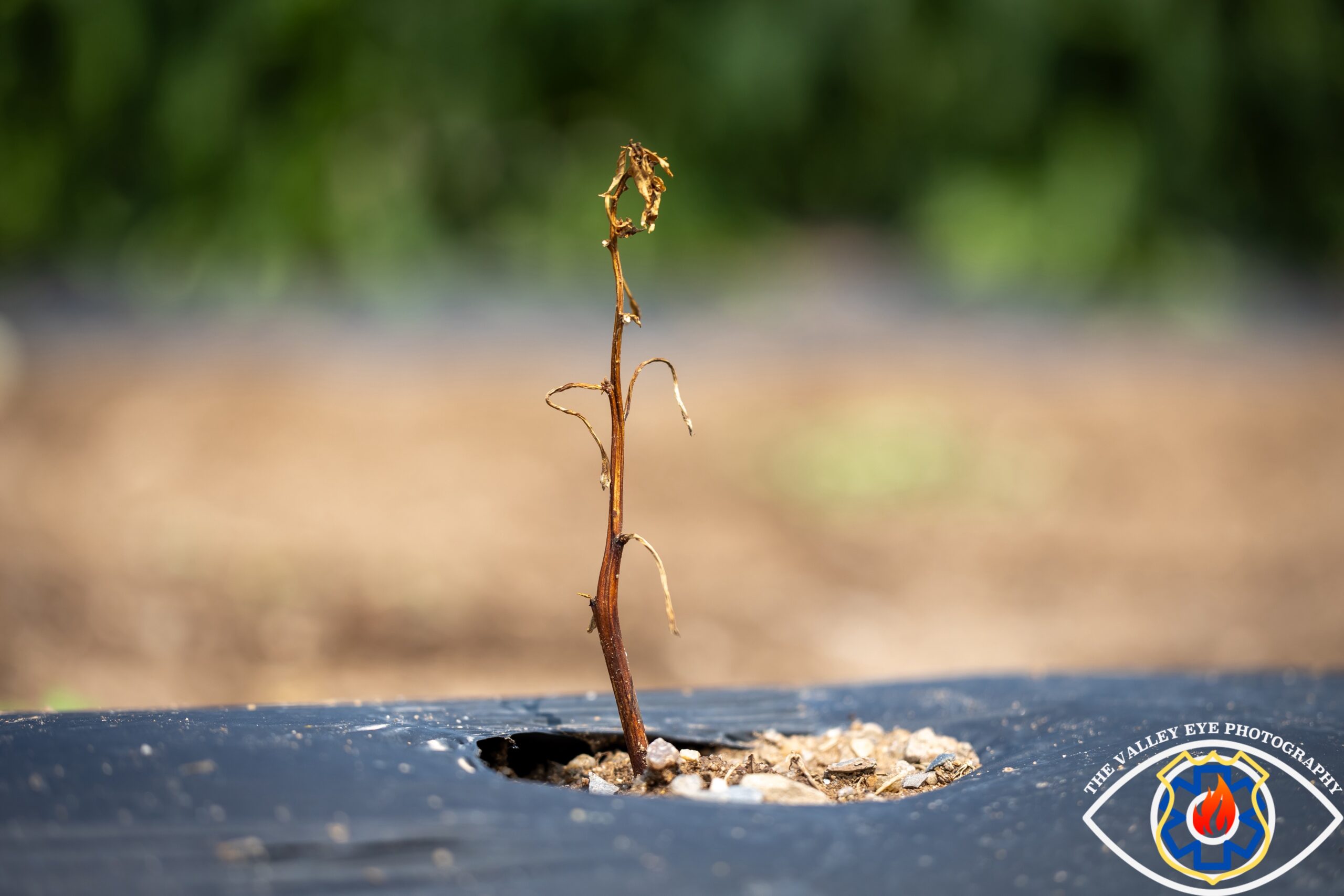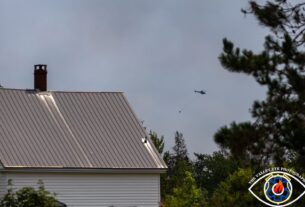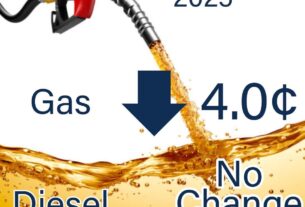Farmers across the Annapolis Valley are feeling the effects from the severe drought this year.
Earlier this week, Courtney Copeland, with T&C Agriculture in Clarence, sparked the discussion on the impacts felt by farmers.
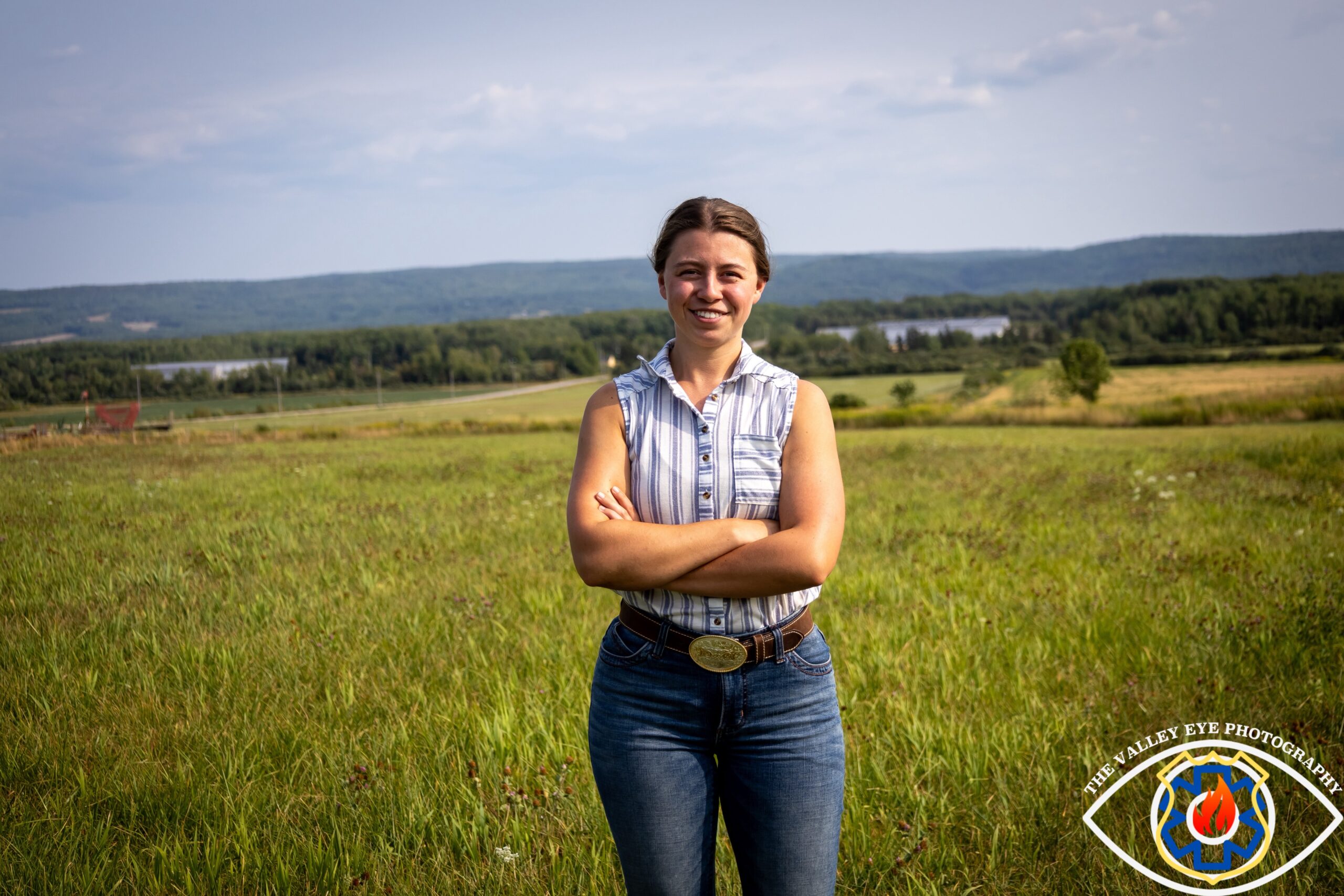
“Just the lack of conversation. I thought it needed to be talked about, and clearly it’s been a successful conversation,” Copeland said after being asked as to why she spoke up.
She’s right, there has been a lack of conversation while our farmers are experiencing things they’ve never seen before.
Fields have gone weeks without any sign of relief from Mother Nature, bringing on added stress and diseases to crops that are so heavily relied upon each year.
While every farmer is feeling the effects of this drought differently, many are already seeing losses in their fields. Some are worried they won’t have enough food to feed their livestock this winter and others are concerned that prices are going to skyrocket.
What’s the answer? Well, some crops are too far gone and any source of relief won’t help, but we still need rain and not too much of it at once. Even though a nice down pour would be what everyone is looking for, this is not ideal and can have consequences, not only for farmers.
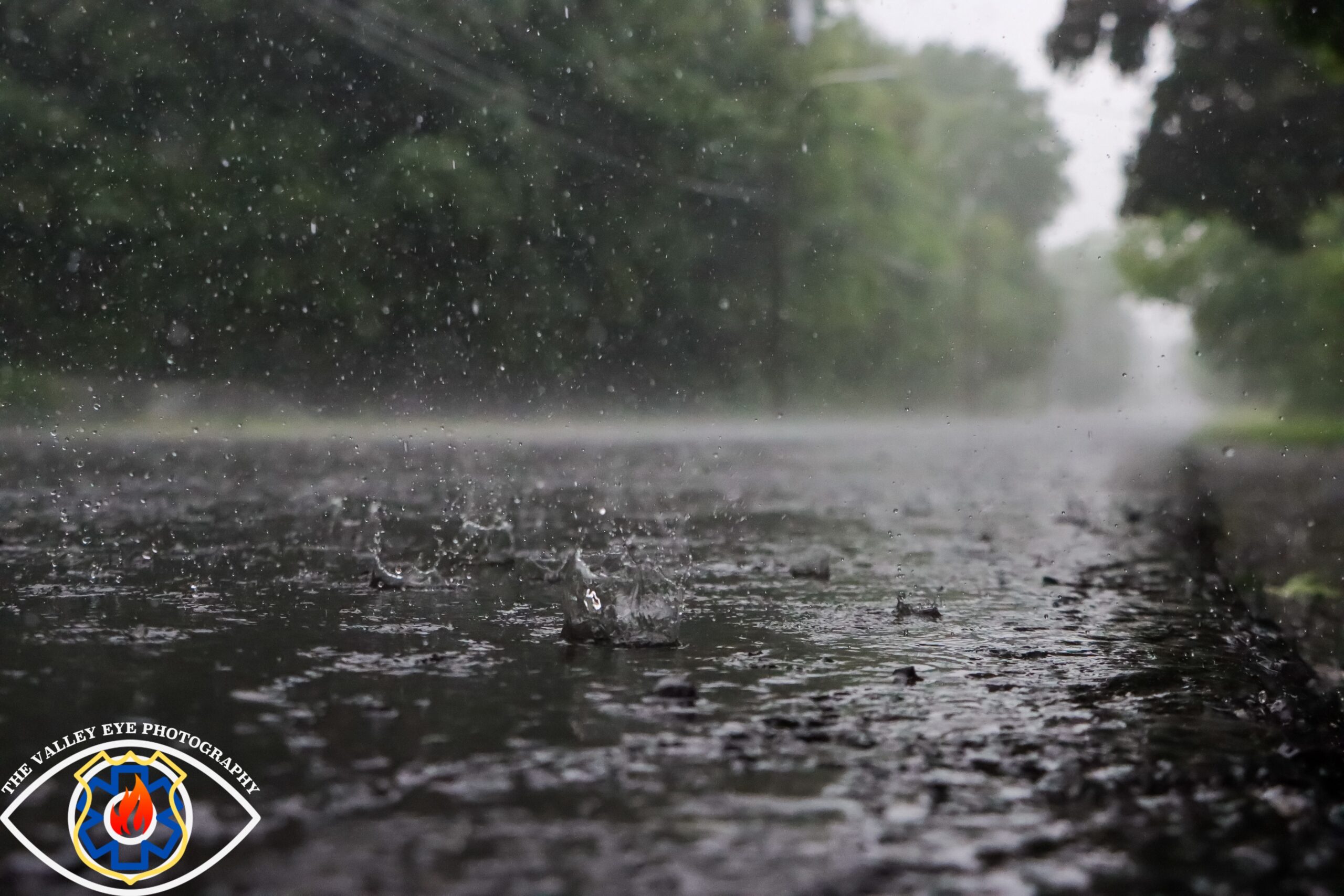
Downpours can create added risks on crops and land, such as erosion, flooding, and frankly, the ground is too dry right now for plants to absorb it properly.
In some cases, farmers have even been looking to buy water to keep their crops alive this season, but getting water is hard to come by and those that have it are relying on it.
Irrigation has been a temporary relief while desperately awaiting rain, just to ensure crops can stay alive, but this brings on added costs, water shortages and still, not all plants are able to survive.
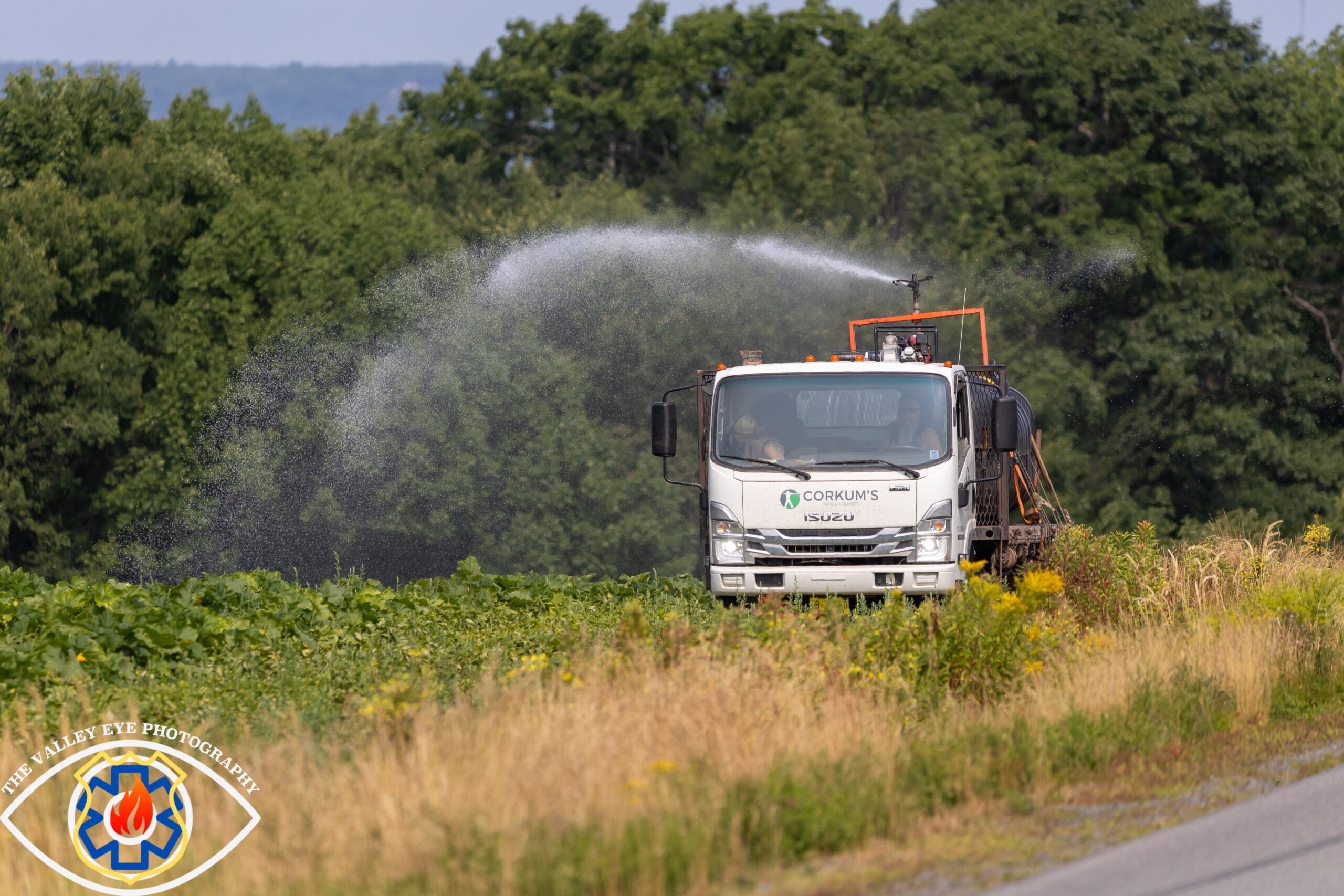
With the extreme heat and lack of rain, vegetables are being exposed to sun scalding. This results in leafs on plants such as vegetables, curling and exposing the vegetables, like green peppers, to the sun resulting in them dying.
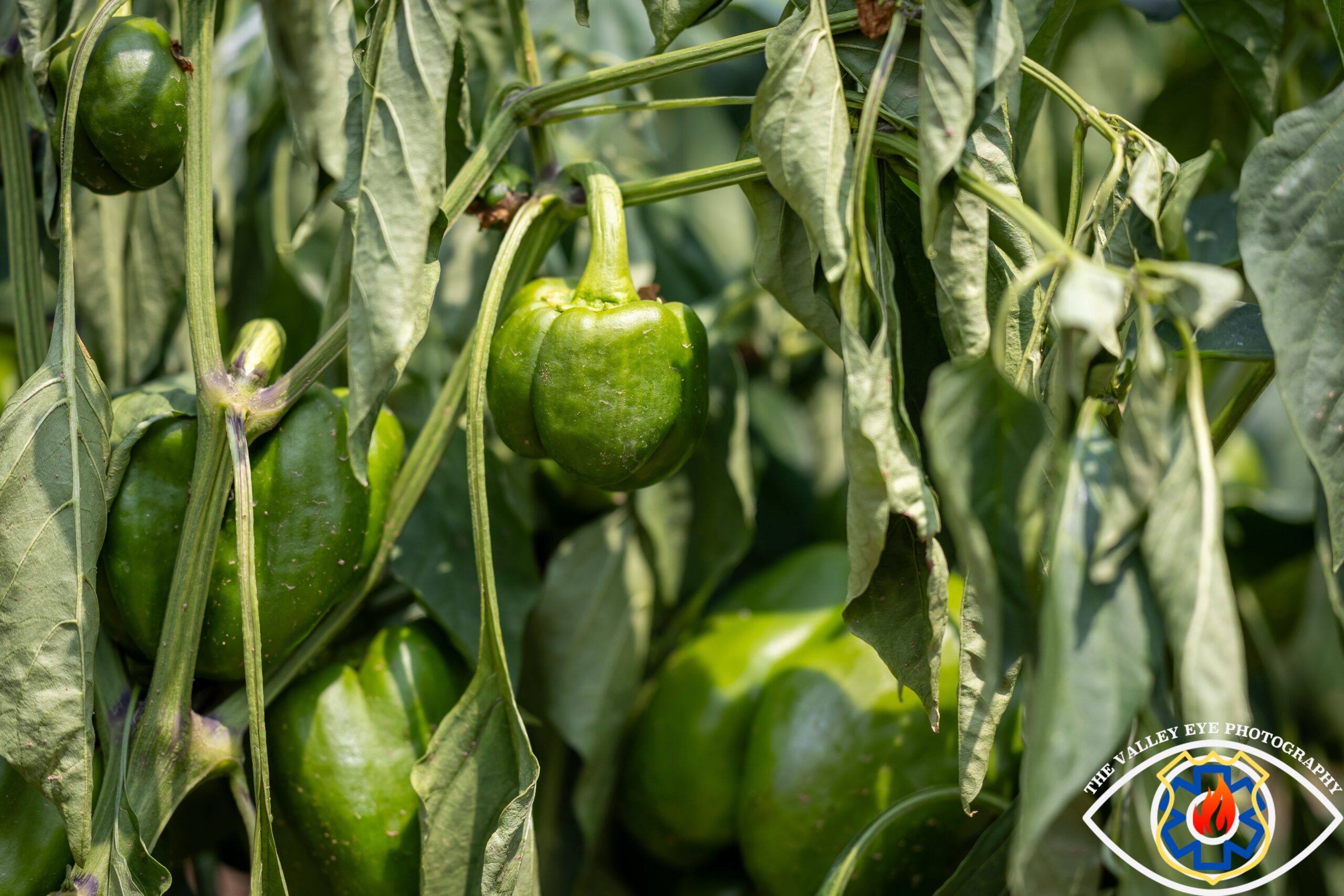
“When the plant gets weak and it doesn’t get enough nutrition, they are under stress. The plant becomes vulnerable to diseases and different things you don’t normally see during normal seasons,” stated Brice from Nichols Farm Market.
Healthy plants are able to fight off diseases, but the heat and rain play major factors in the size and quality of products. The lack of water is showing some signs of reduced yields.
Even the fertilizer hasn’t absorbed into the ground in some places. It remains lying on the top of the soil, reducing the success in many vegetables that are being grown.
Everything that the Nichols Farm Market grows, strawberries, blueberries, potatoes, squash, peppers, corn, and much more, all channel through their farm market.
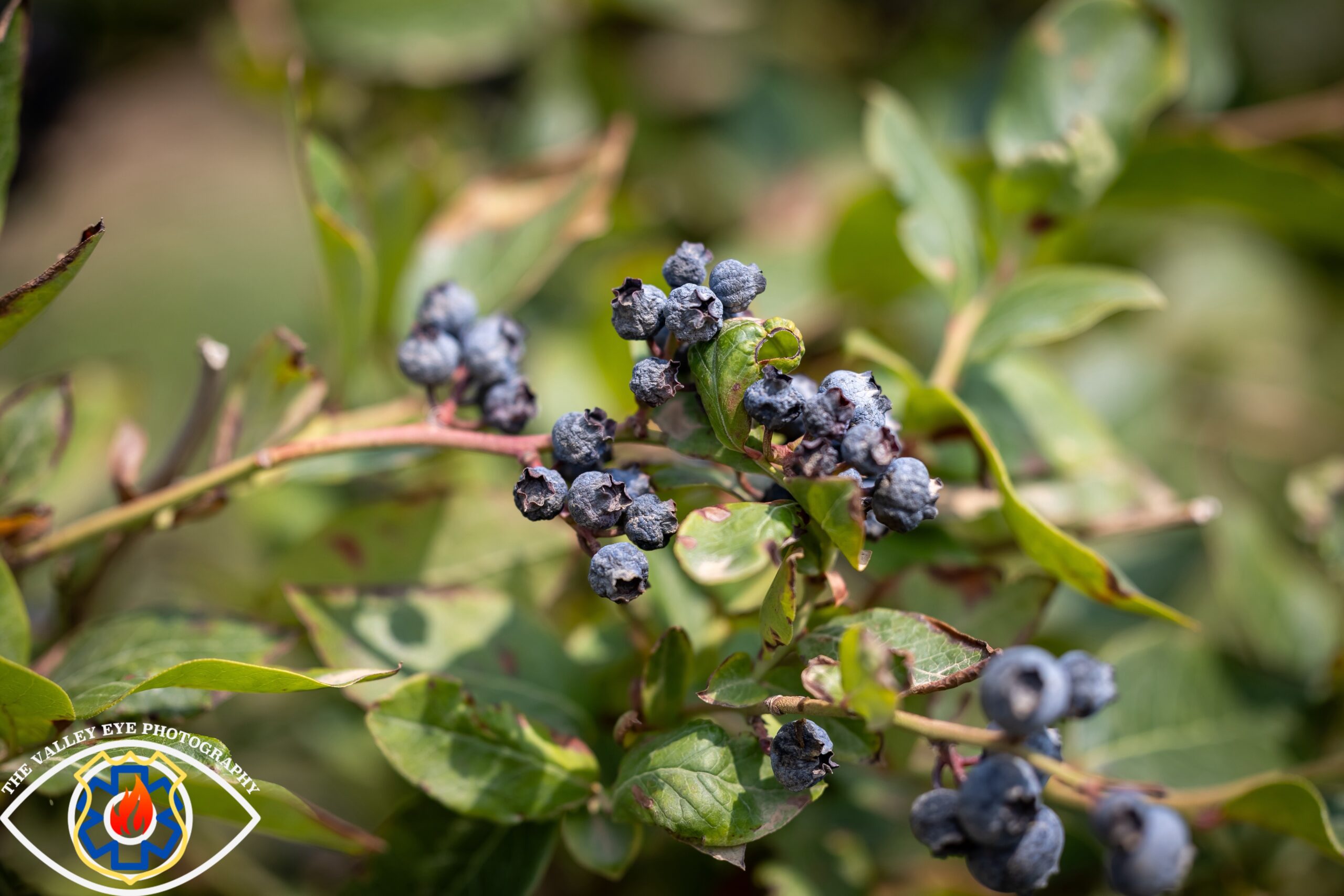
With 40% of sales at the market being from their produce, they undoubtedly will be impacted.
Reduced rain and steady heat is killing plants such as cucumbers which need large leaves to protect them. This year leaves are significantly smaller, exposing the vegetable to the sun, impacting numerous vegetables on the Nichols Farm.

“You can’t worry about the little things that are out of your control, you can only do so much. We’re doing our best to keep things rolling,” Sam Nichols, owner of Nichols Farm Market, commented.

Nichols took over the former Forsyths Farm Market along Highway 1 in Berwick West just a few years ago. She’s choosing to remain optimistic while navigating these new challenges.
Keeping crops alive is creating more work for farmers who have to set up irrigation and move the heavy equipment to different fields, soaking up many extra hours and unplanned added costs to a number of operations across the Annapolis Valley.
Nichols Farm Market even had to go so far as to get their pumps lower in order to pull water from their ponds. Due to how low they’ve gotten, every bit of water for irrigation is vital to keep crops healthy.
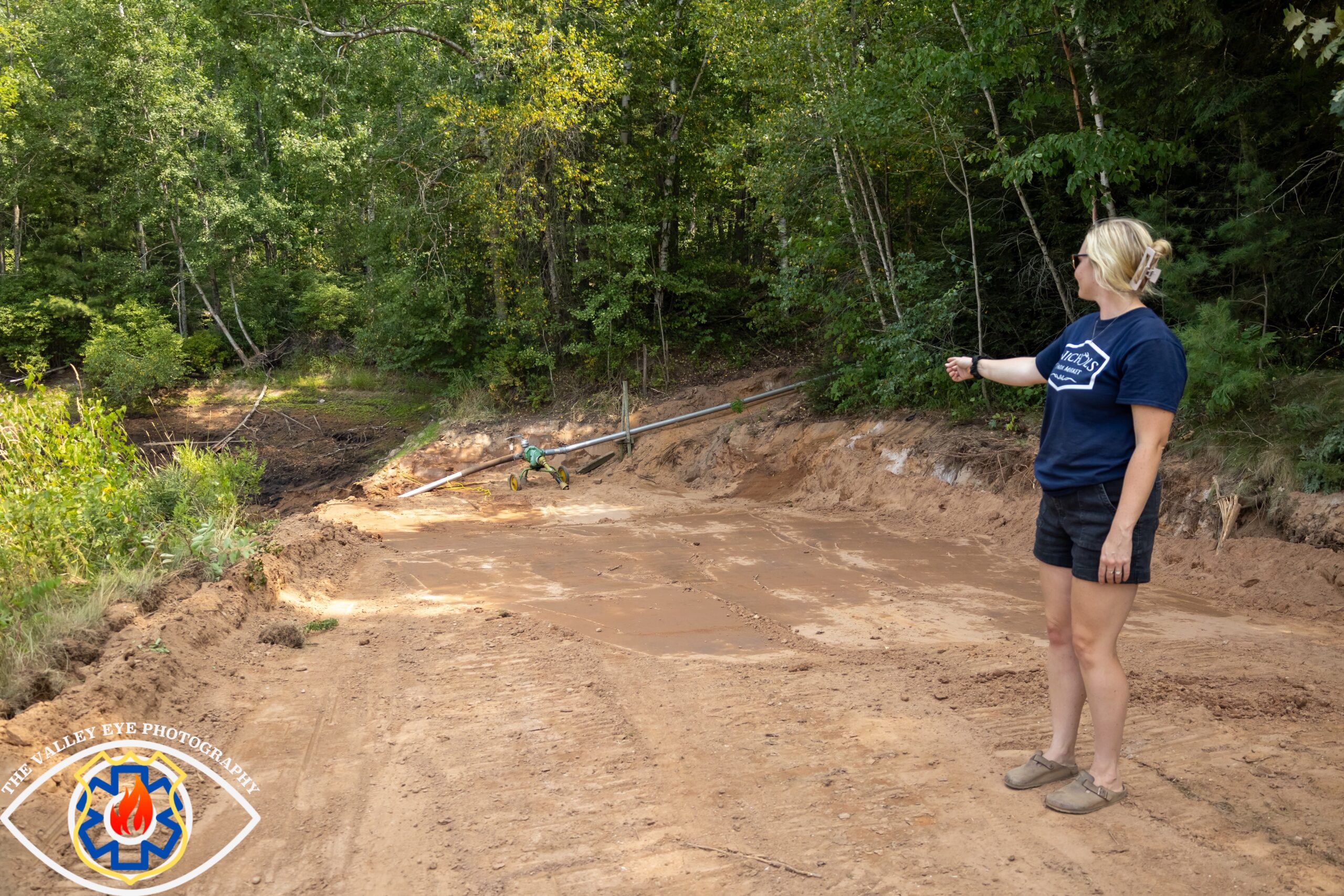
In some cases farmers have been looking to buy water to keep their crops alive this season, but getting water is hard to come by.
Apple farms are also starting to see losses in their orchards and they are working tirelessly to save them.
Crisp Growers has installed drip irrigation to prevent losses, but their ponds are being sucked dry.
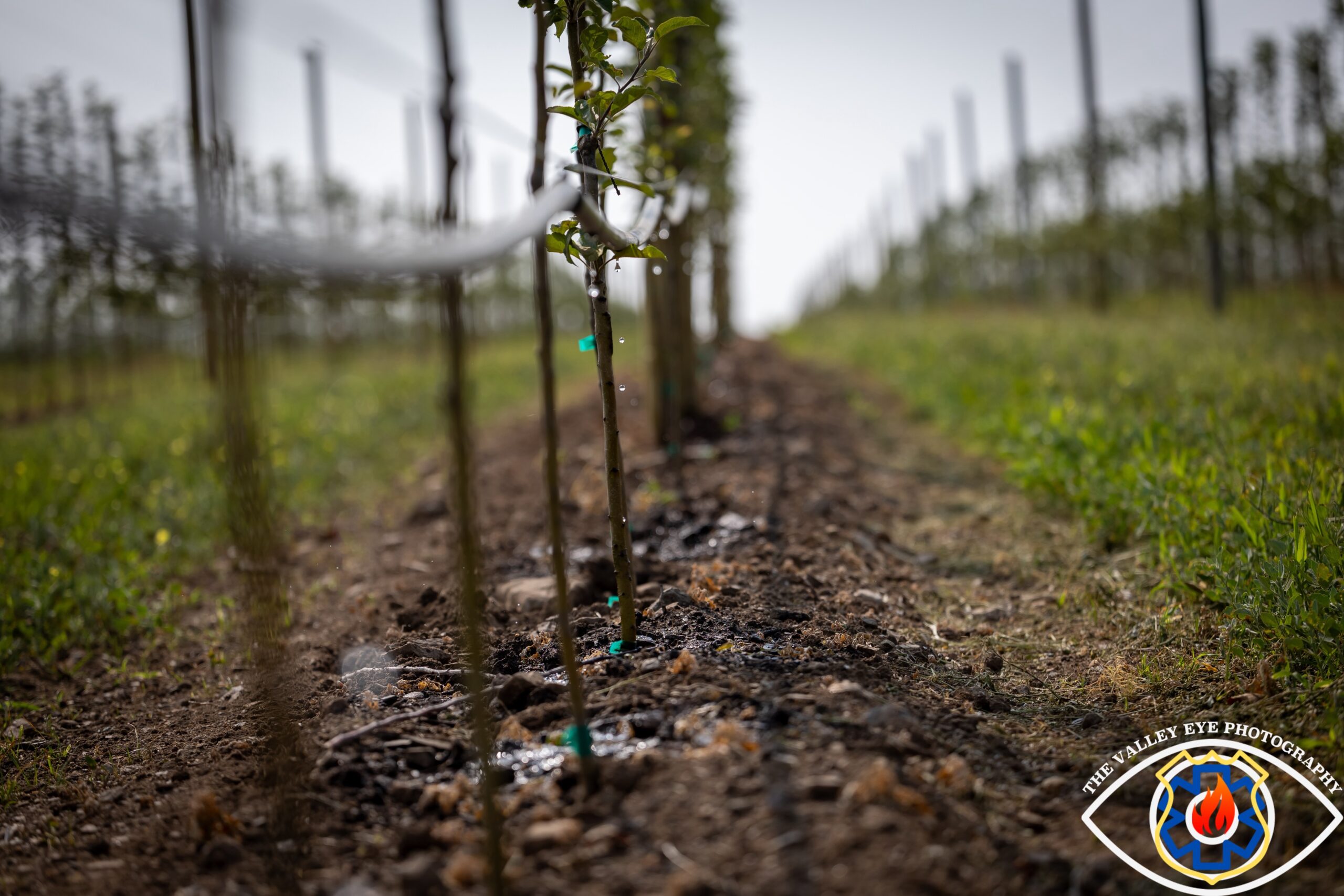
What are these added costs? Well, keeping farm equipment running to pump water and the man hours to install irrigation isn’t cheap.
The big question is, will the irrigation make a difference? Even though the crops look healthy, it’s too early to tell how the quality of the products will be.
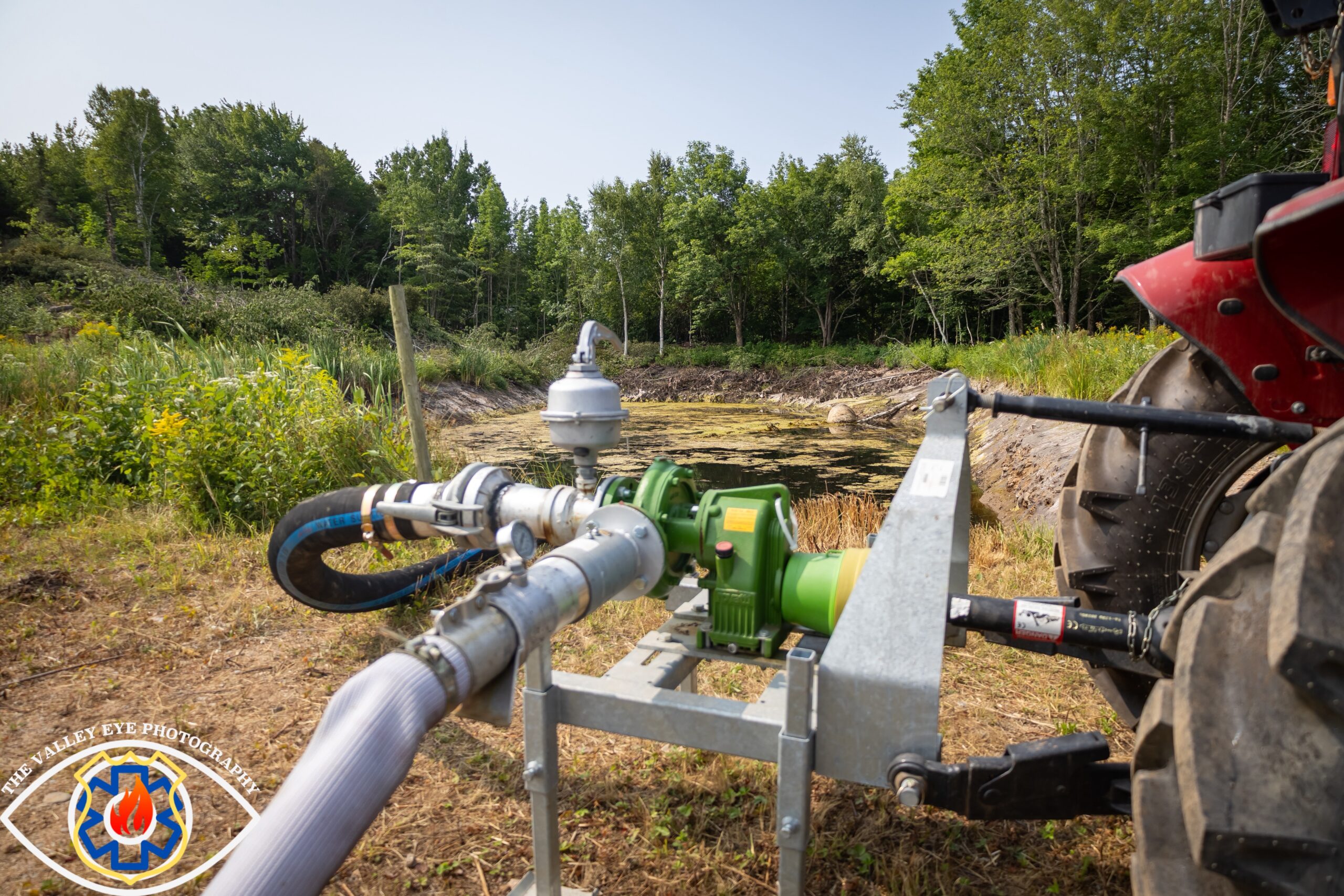
It was evident that a large section of apples are a total loss at Crisp Growers operation in Morristown. Some apples are smaller and mushed compared to apples on other areas on the 300 acre property, and there’s no way to bring them back this far into the season.
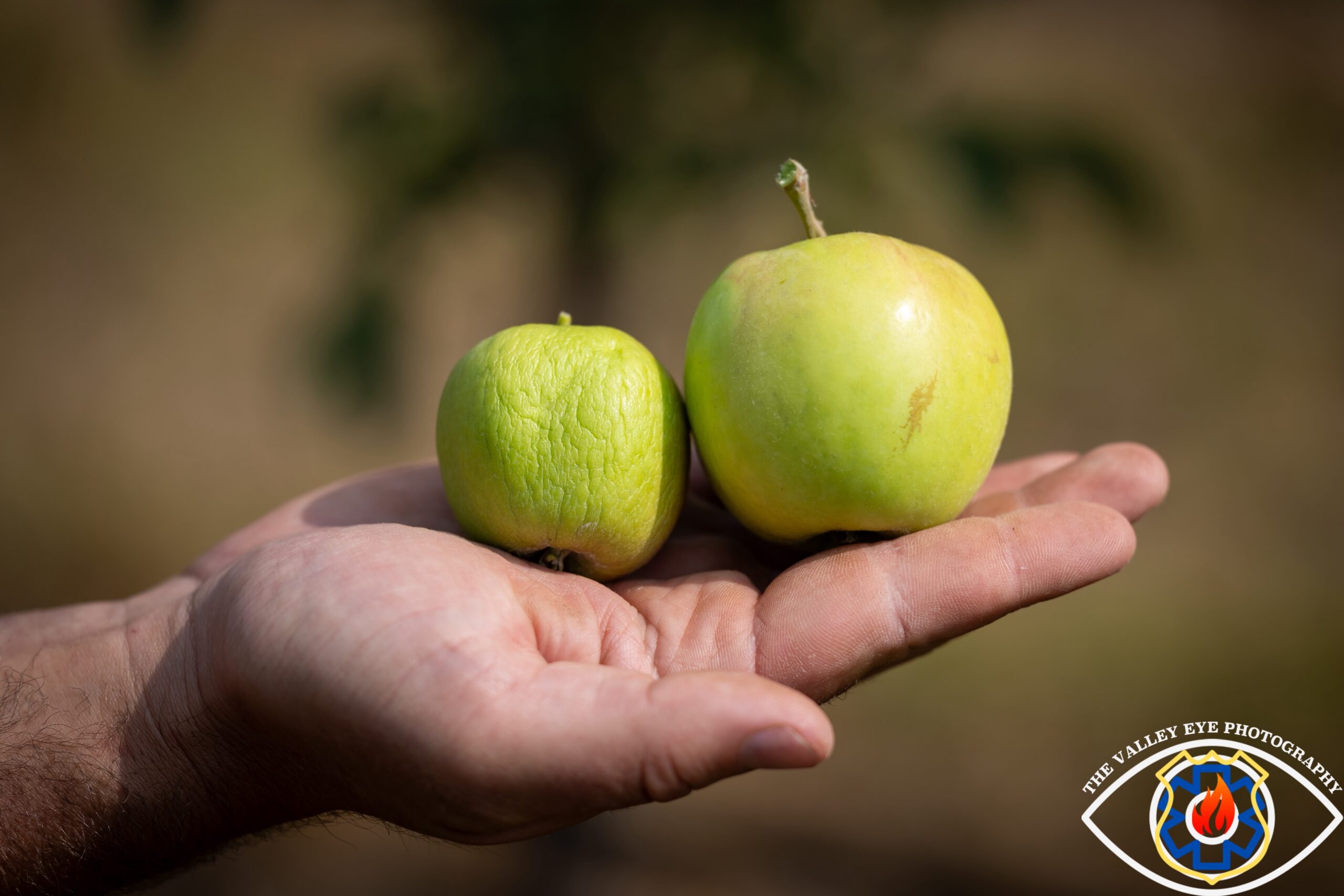
“Especially with this drought, soil types make a huge difference. The apples we would have seen are on a sandy and rocky soil, so there’s no water holding capacity. This means smaller root stalks,” Crisp Growers Farm Manager, Hayden Sarsfield, explained touching on the size difference on apples.
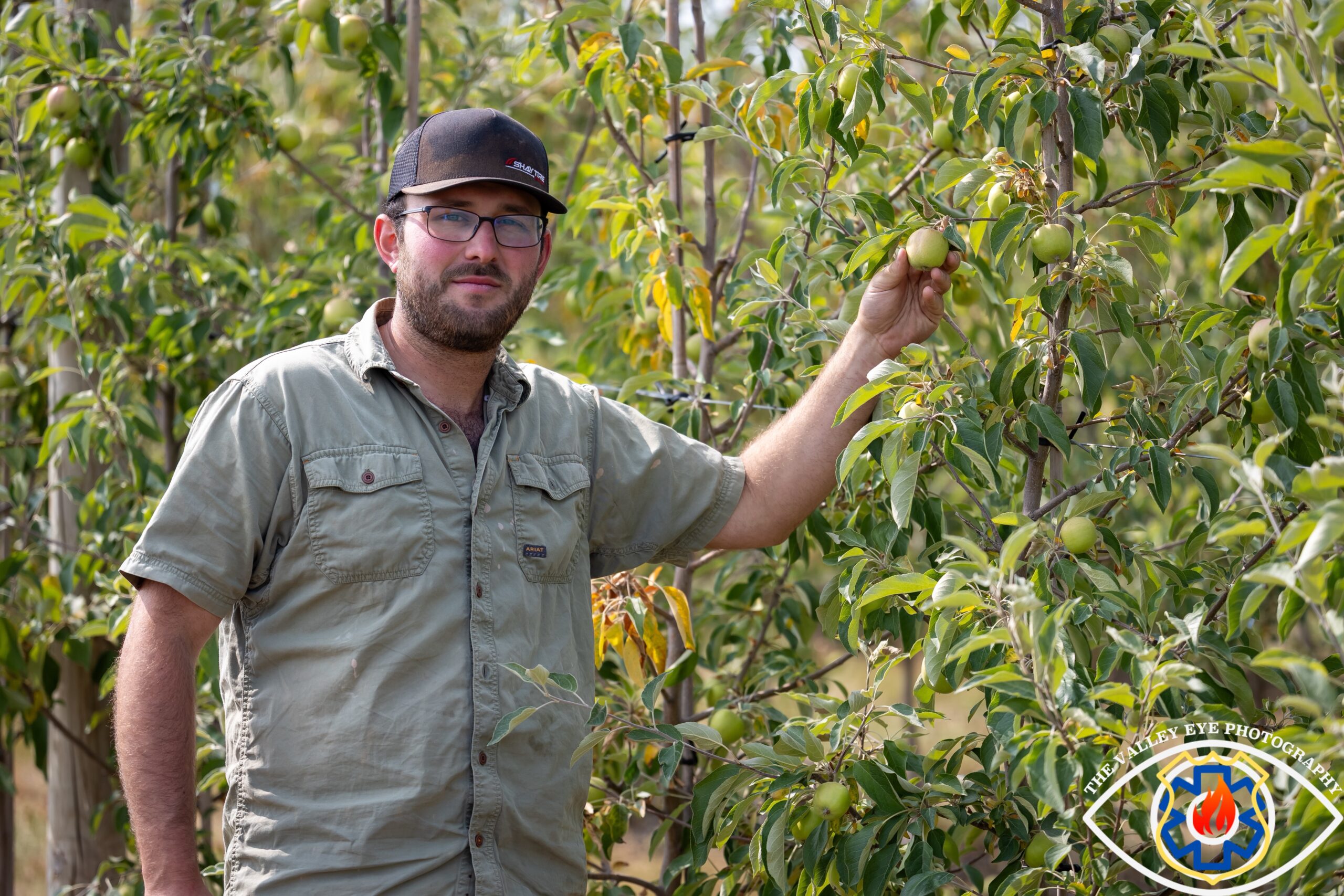
The smaller root stalks mean less moisture for the trees to absorb, compared to matured trees with better soil where the roots go much deeper, finding more moisture to absorb.
Even trees that were planted a few years back aren’t showing the growth they should be which can cause delay in production for apple trees.
The potential of significant losses are high and with the actual figure unknown, it could be catastrophic.
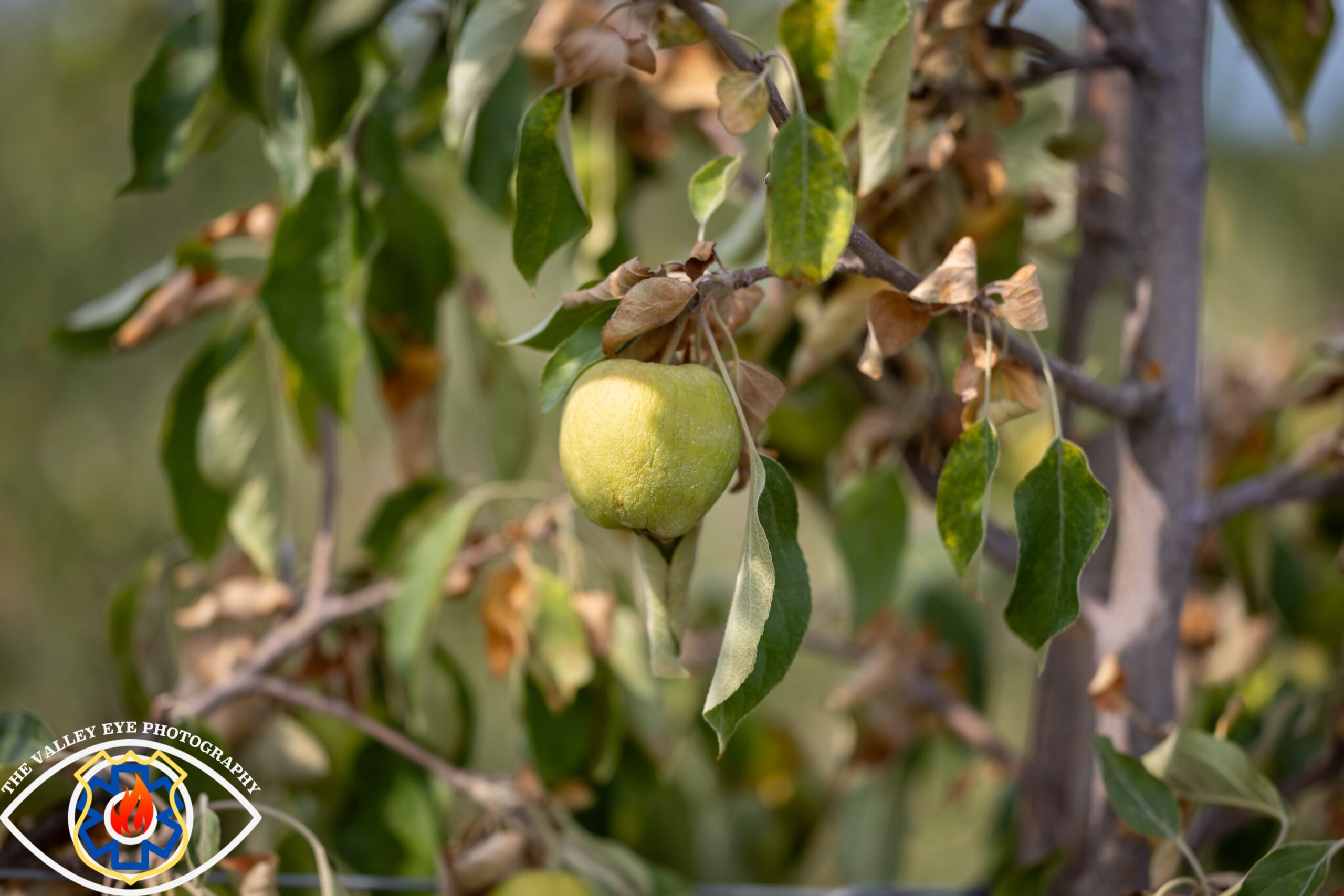
For over 50 years, Bill Biggs, with Biggs Farm Limited, has been raising dairy and planting crops outside of Grand Pre. Their farm has been in the family tree for over 100 years. They rely on harvesting soybeans, winter wheat, and corn to feed dairy cattle in order to produce milk.
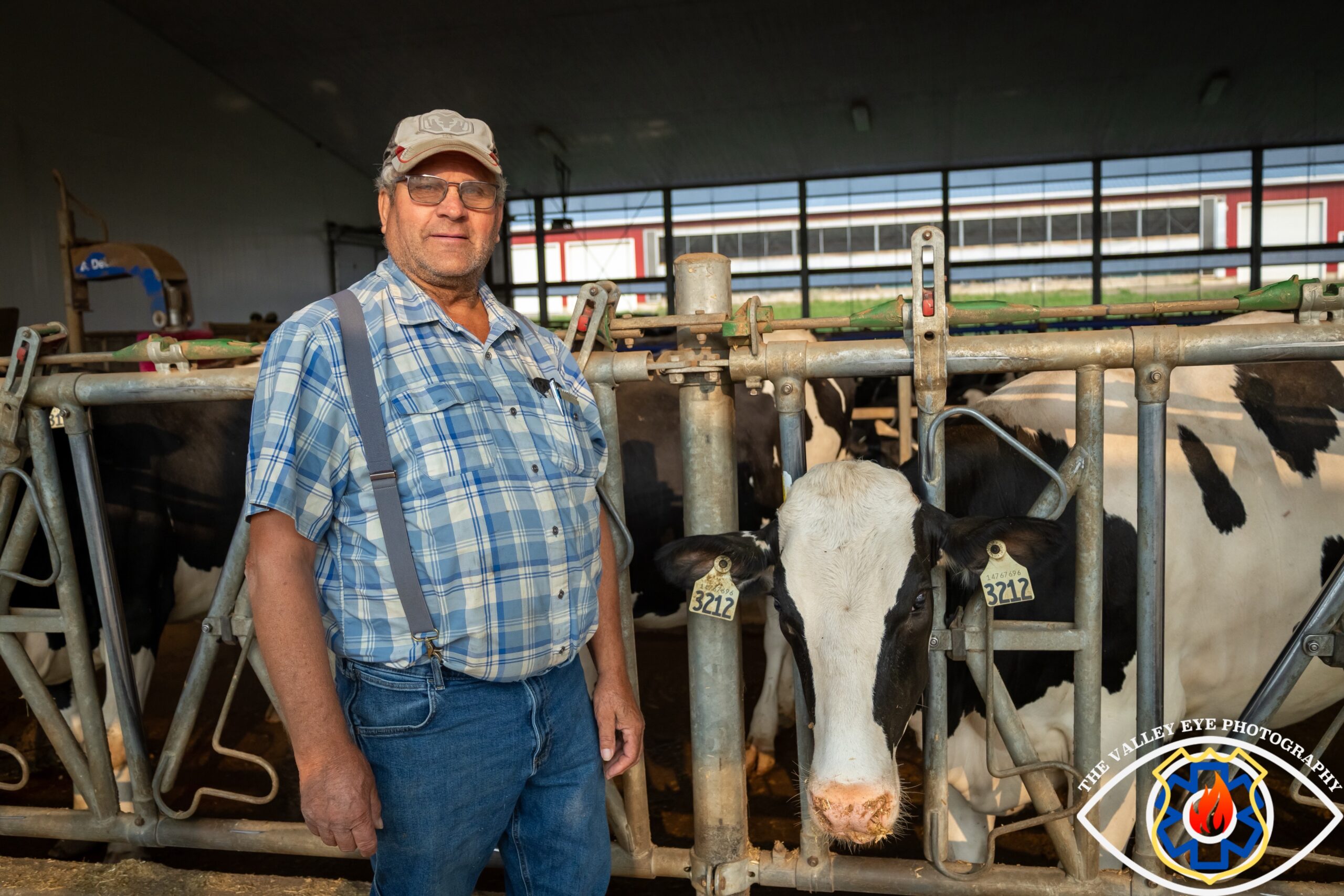
Even though many of their crops aren’t set to be harvested until the fall, Biggs said it’s a bit too early to tell how it will impact them.
Biggs is still concerned the drought will have impacts on yield quality, which can ultimately have repercussions in the milk production.
“We might he able to salvage enough corn, but is the quality going to be there to give us our milk production to pay for planting the corn,” Bill queried.
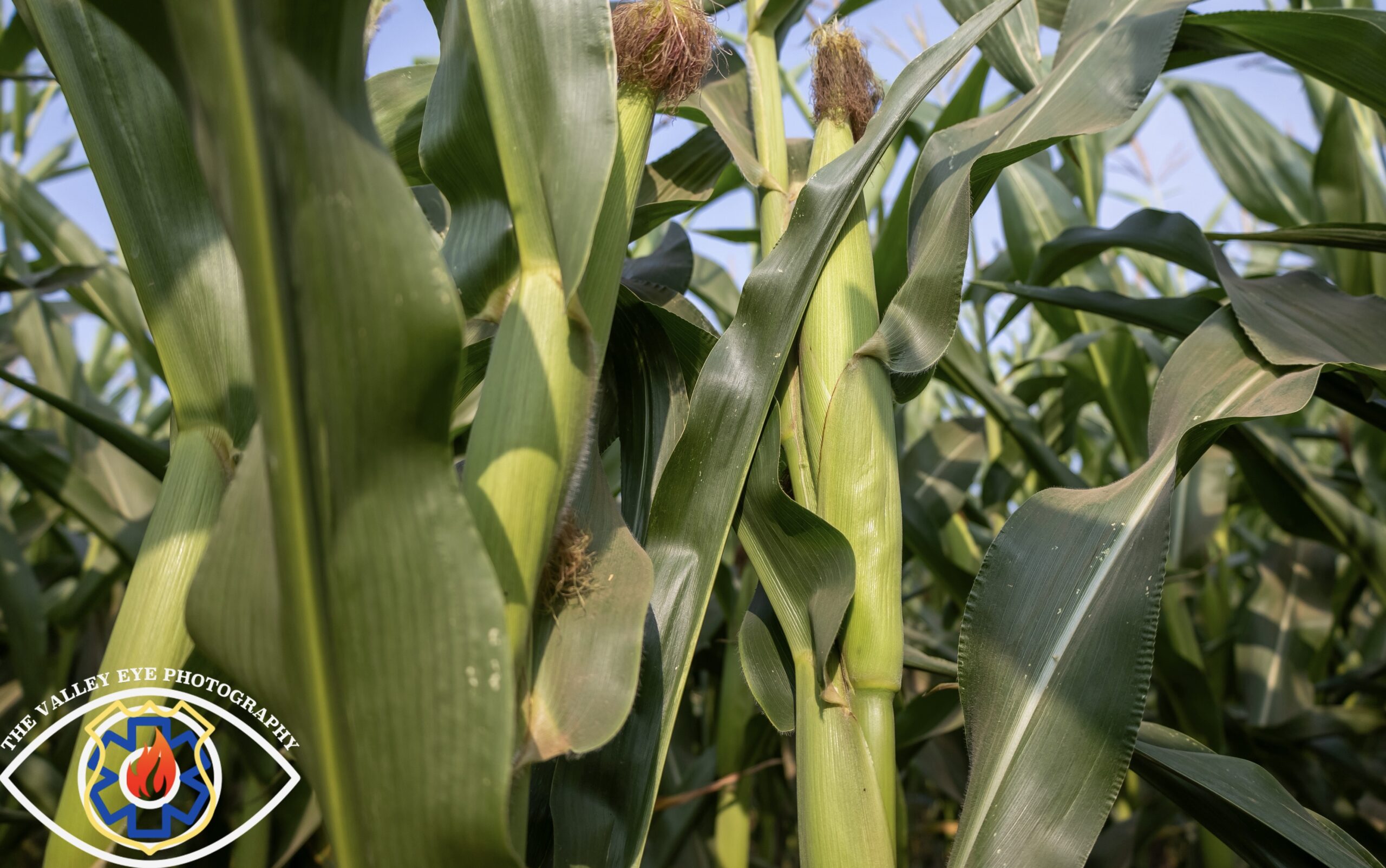
The biggest question is the quality. With early corn planted, many fields look good, but with it being so dry, it’s unknown if it’s going to pollinate. Thus means there may not be any corn on the cobs to feed cows come winter.
In Bill’s 51 years, this is the driest he’s ever seen it.
“That’s our biggest worry right now is, are we going to have enough feed to feed the cows this winter?” Biggs worried.
Many corn stalks across the valley that are used for feeding livestock, as well as many other crops planted for human consumption, are all suffering due to the lack in rain.
From their roots, to the cob of corn on the stalk, there are signs of weakness and disease. Weak roots can result in corn stalks being blown over when winds pick up, causing losses in crops.
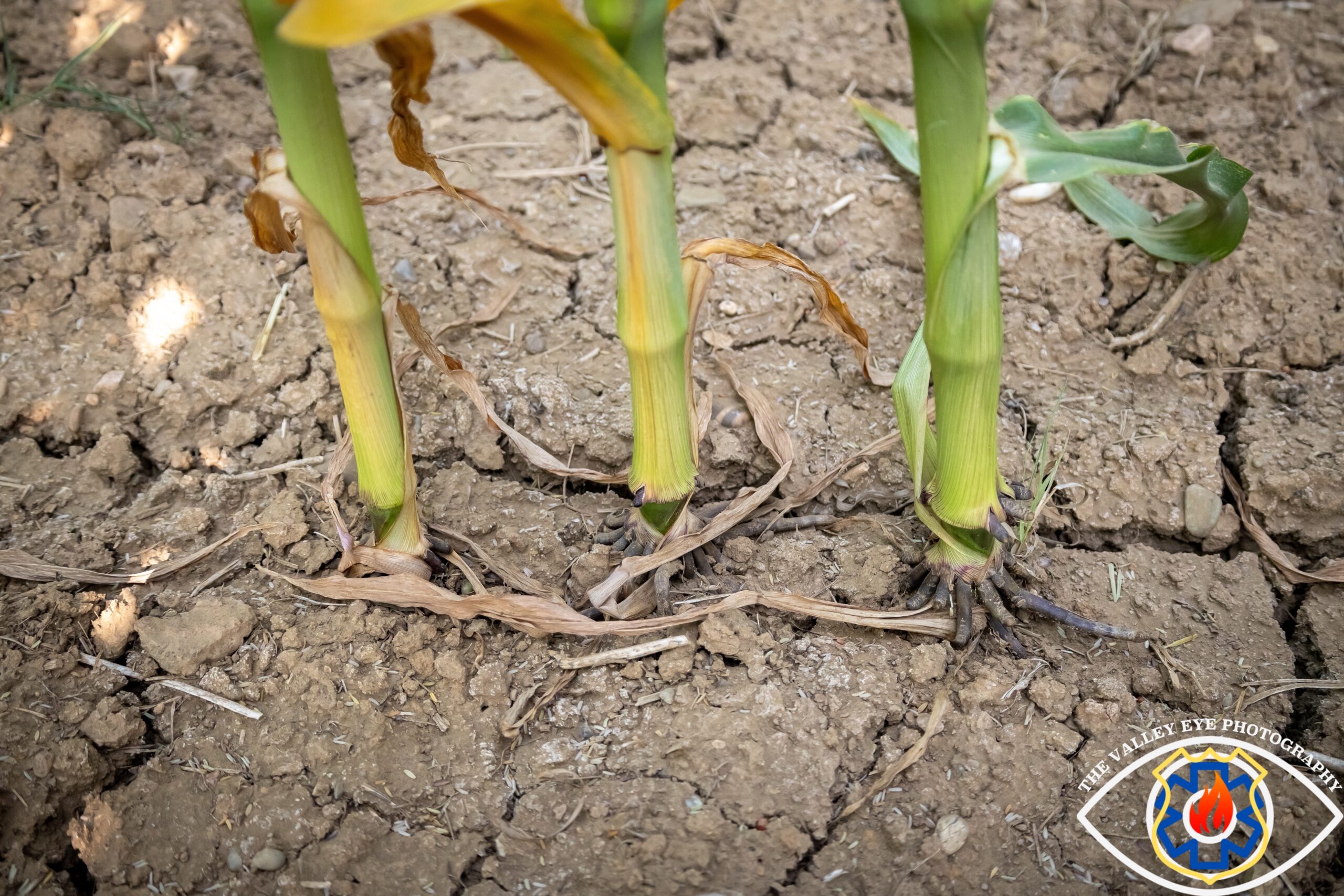
This drought is impacting farmers full circle – not just one, but all farmers, in some capacity. Most feel as if it’s going to impact them severely.
There is no winning here unless Mother Nature plays fairly. With the elevated risk of wildfires due to our current dry conditions and the potential of heavy rain in the future which can result in flooding, emergency services are on high alert.
“This back-to-back threat of wildfire followed by potential flooding is something we’re actively preparing for. We’re urging residents to stay vigilant, stay informed, take precautions seriously, and be ready for rapidly changing conditions. To date, all of our incidents have been controlled quickly, but the risk is extreme and we are asking for everyone’s cooperation until conditions improve,” Wolfville Deputy Fire Chief, Chad Schrader, stated.

Shrader also expressed how equally concerning it will be when the rain comes. With such a long dry spell, the ground has lost all its ability to absorb water which can in turn lead to significant surface run off, flash flooding risks, leaving low lying areas being vulnerable.
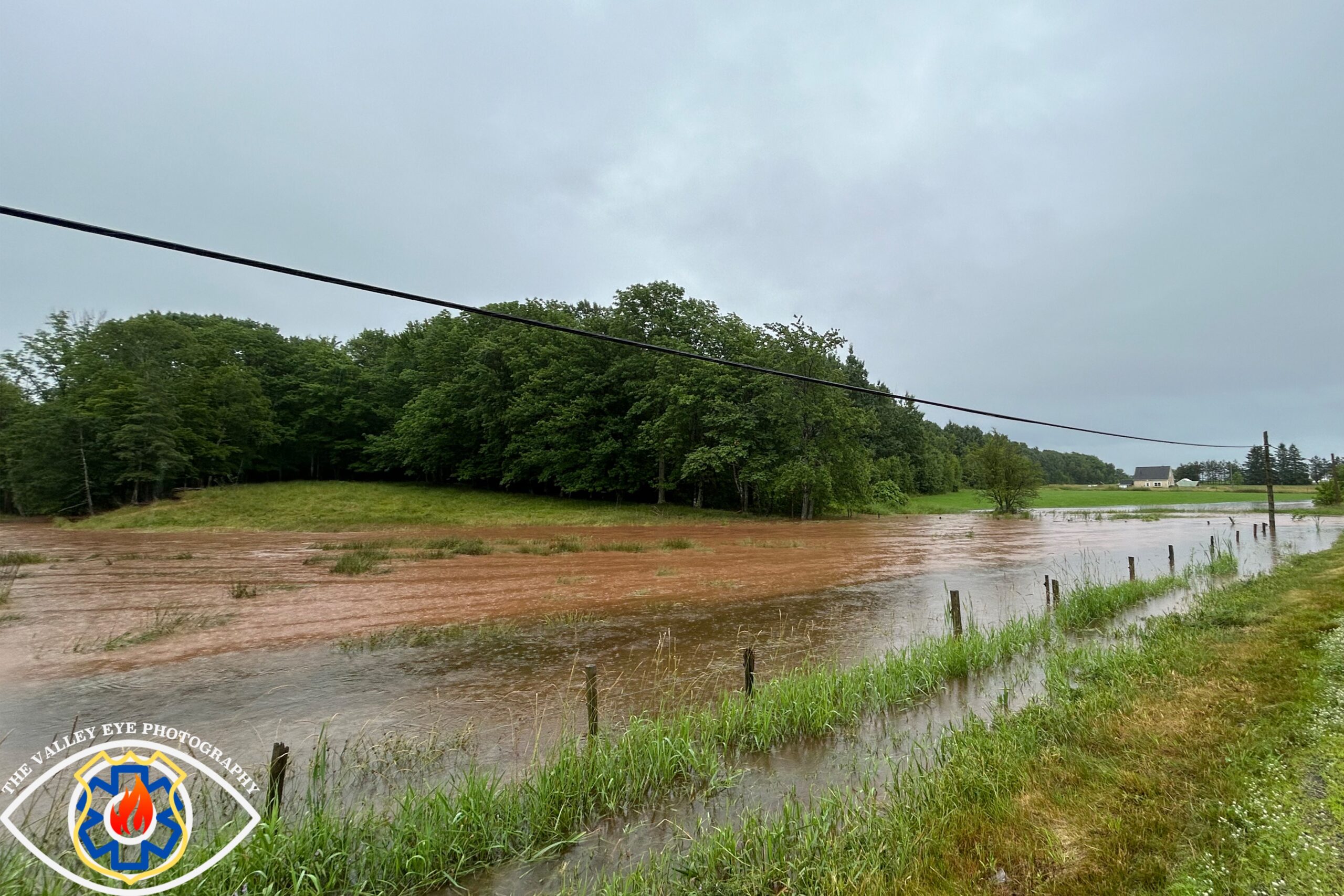
In the summer months, livestock owners take advantage of putting their animals out in fields to eat grass which gives them vital nutrients to grow fat and healthy, but with dead grass in a lot of pasture, they aren’t getting these things which is taking more out of the pockets of farmers. Due to the extremely dry grass, livestock are missing out on the extra moisture absorbed from healthy, green forage.
Bentville Farms runs a beef farm with over 180 head of cattle. Mitch Best has been forced to drop hay in fields due to dead grass, ultimately taking hay which is stored for winter use. By feeding hay to 4 out of his 8 groups of cattle in fields, this is bringing in added costs resulting in more pasture rotations and fertilizing, yet the grass isn’t growing back.

Not only is he forced to do this, but those who have goats, horses, dairy, and other beef cattle are in the same boat, putting an added strain on their already fragile stock.
“This is the first time in August we’ve ever had to feed hay in our pastures,” Best shared.
Dipping into hay meant for the winter is causing stress on a lot of farm owners. Most are wondering how they’re supposed to feed their livestock, while some are already considering selling off cattle.
Hay and silage producers who provide high quality product to farmers across the Annapolis Valley are also feeling the effects and are see what’s coming.
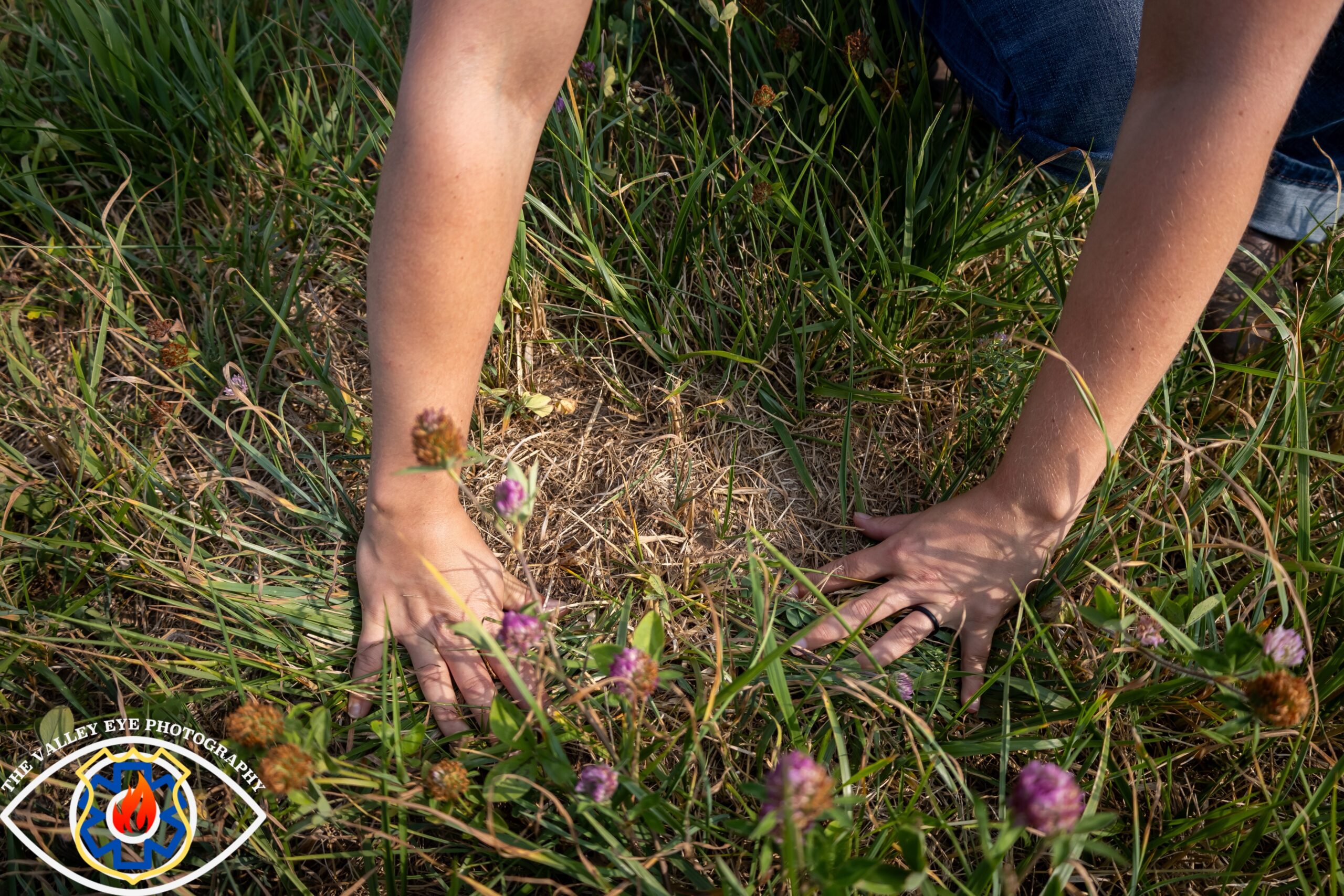
While many of us might see grass as pretty generic, myself included, there are many hidden details.
Various forms of grass like orchard, timothy, fescue, and canary, are used in fields to produce hay. They are also mixed with clovers and alfalfa, which are very popular in the haying industry as they are high in both proteins and sugars.
Producers like Courtney Copeland and her partner Tyler Genue who operate forage based farms are worried. With their first cuts of hay complete, they should be preparing for their second cut, which won’t be happening anytime soon due to the considerable amount of dying grass in fields which is too short to be cut again.
“The Alfalfa actually surpasses the rest of the grass in terms of height, however, it’s taken bloom and it’s showing sign of dying,” Copeland with T&C Agriculture shared.
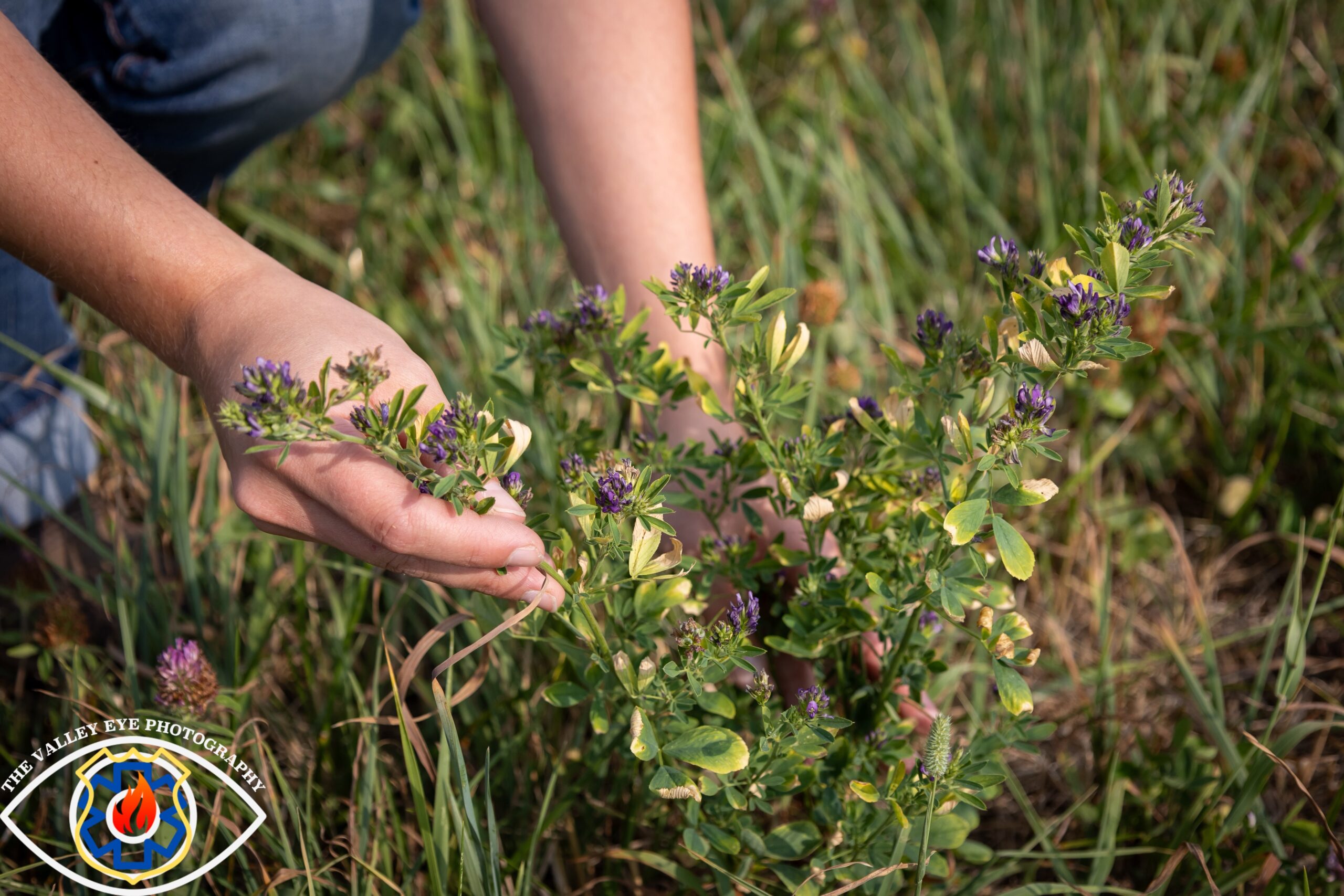
They’ve never seen anything like it during this time of year. With the excessive amounts of heat and lack of moisture, it makes sense, but it’s very concerning for business owners who depend on having hay to supply for other farmers.
“What I can see happening is the price of feed will go up, in both hay and silage, along with the demand – that is going to go up drastically.”
Courtney is unsure on how much hay she’ll have and when her stock is going to run out. With the uncertainty and the lack of second cut, it’s concerning.
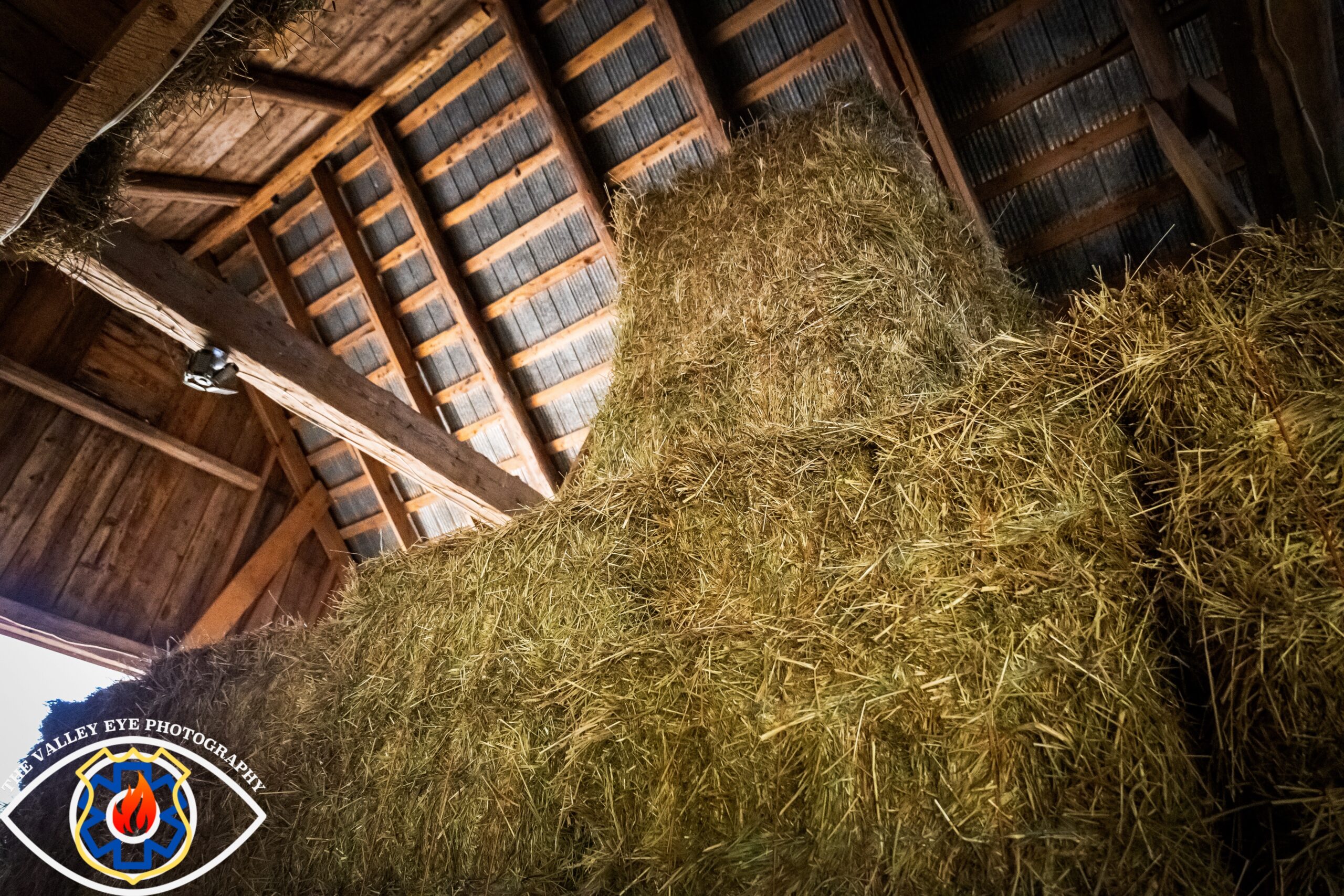
The performance of the grass plays a huge factor, as many, including equine owners, rely on rich hay. This dead grass can drastically impact the quality.
Grass that T&C Agriculture cut early in the summer started to grow back, but due to the lack of rain, it’s been suffocated. The grass is being stunted in growth, ultimately dying off, and it’s not just one field.
Not all farmers are suffering. With reliable irrigation and good soil, some are making out okay!
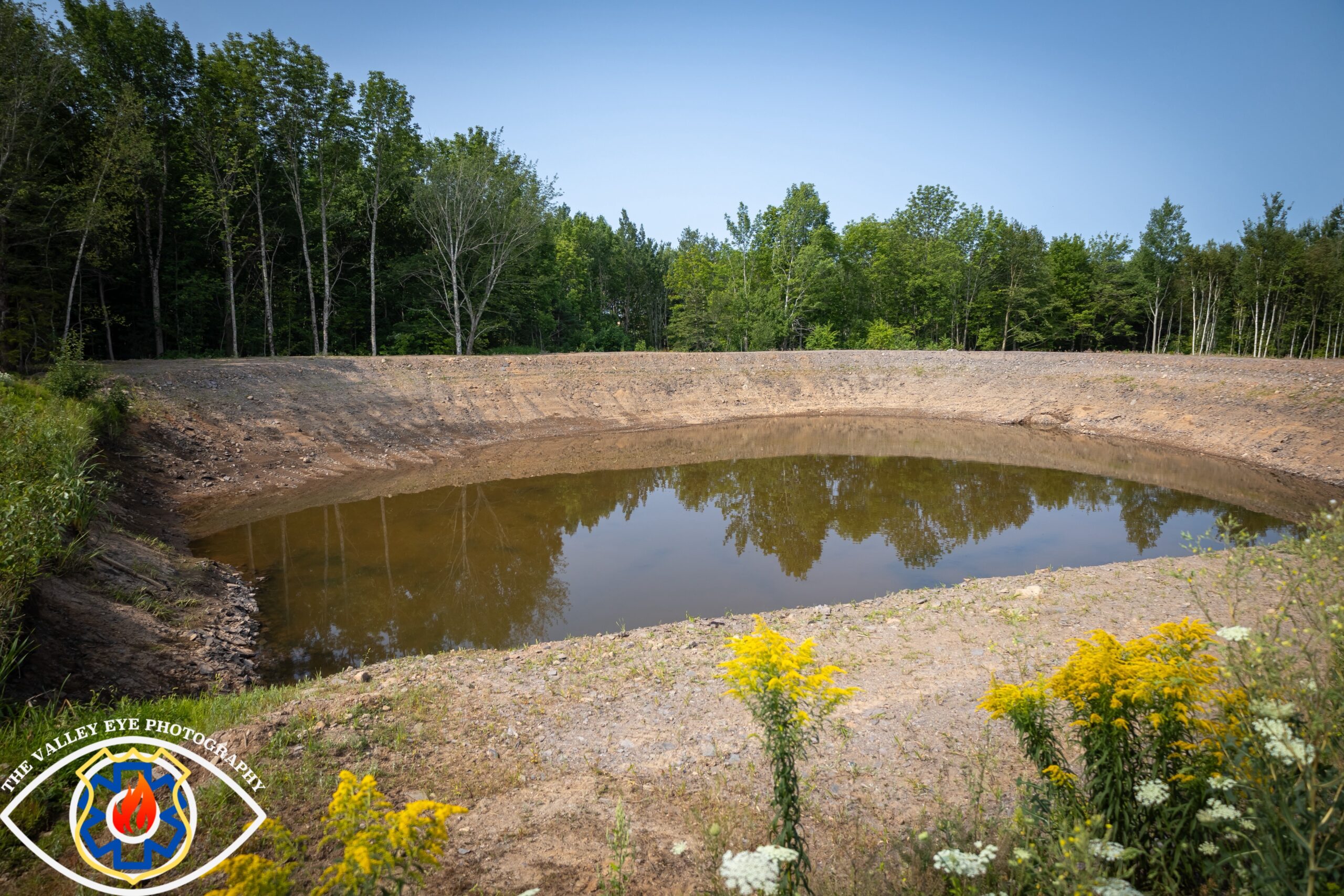
Weather has been unpredictable with rain in the forecast one moment, it disappears the next day, but there has been no real precipitation noted.
Environment Canada reported on August 8th that there was only 2.9 mm of rain over the last 19 days which was recorded in Greenwood.
All our fingers are crossed for some much needed relief. With a provincial burn ban in place, restrictions to woods, many are on edge, hoping things will soon get better.
If you question price increases on local goods, hay suppliers, or just in general, our farmers are impacted. Think of all the farmers who are finding it hard to sleep at night. Support local where you can, it makes a difference.
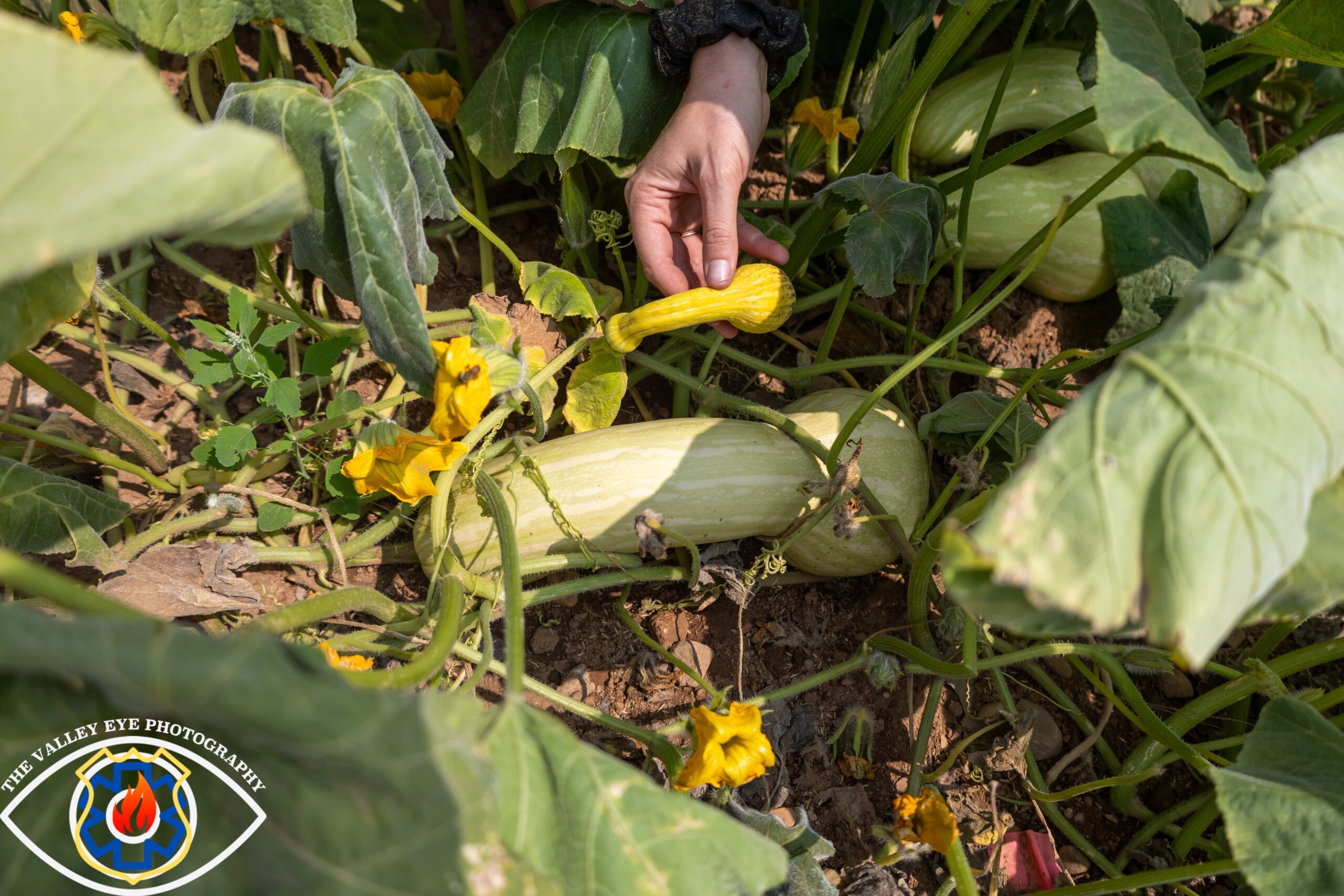
A huge thank you to each and every farmer who took the time to educate and demonstrate to me the impacts being felt across the board.
Adrian J.

